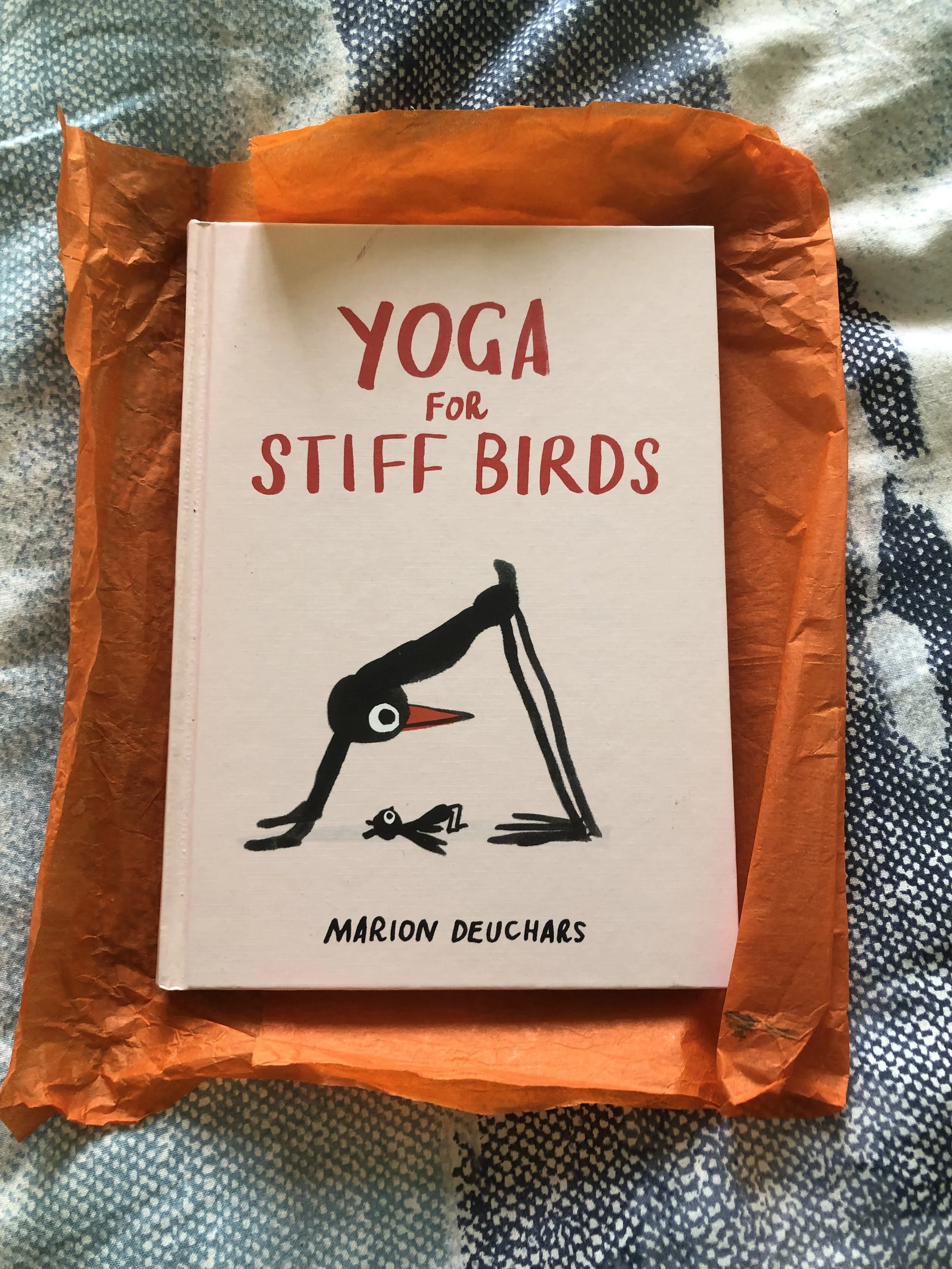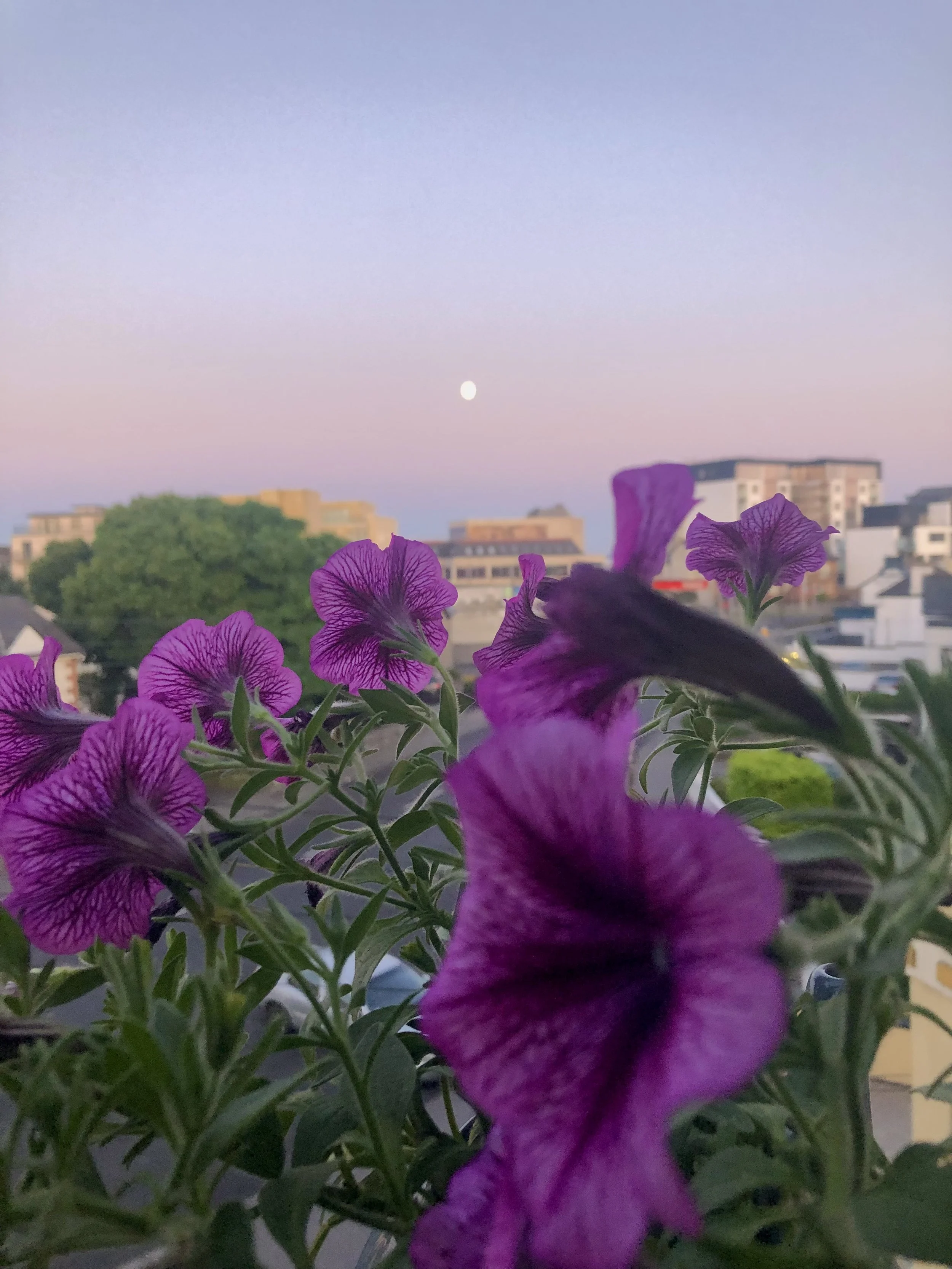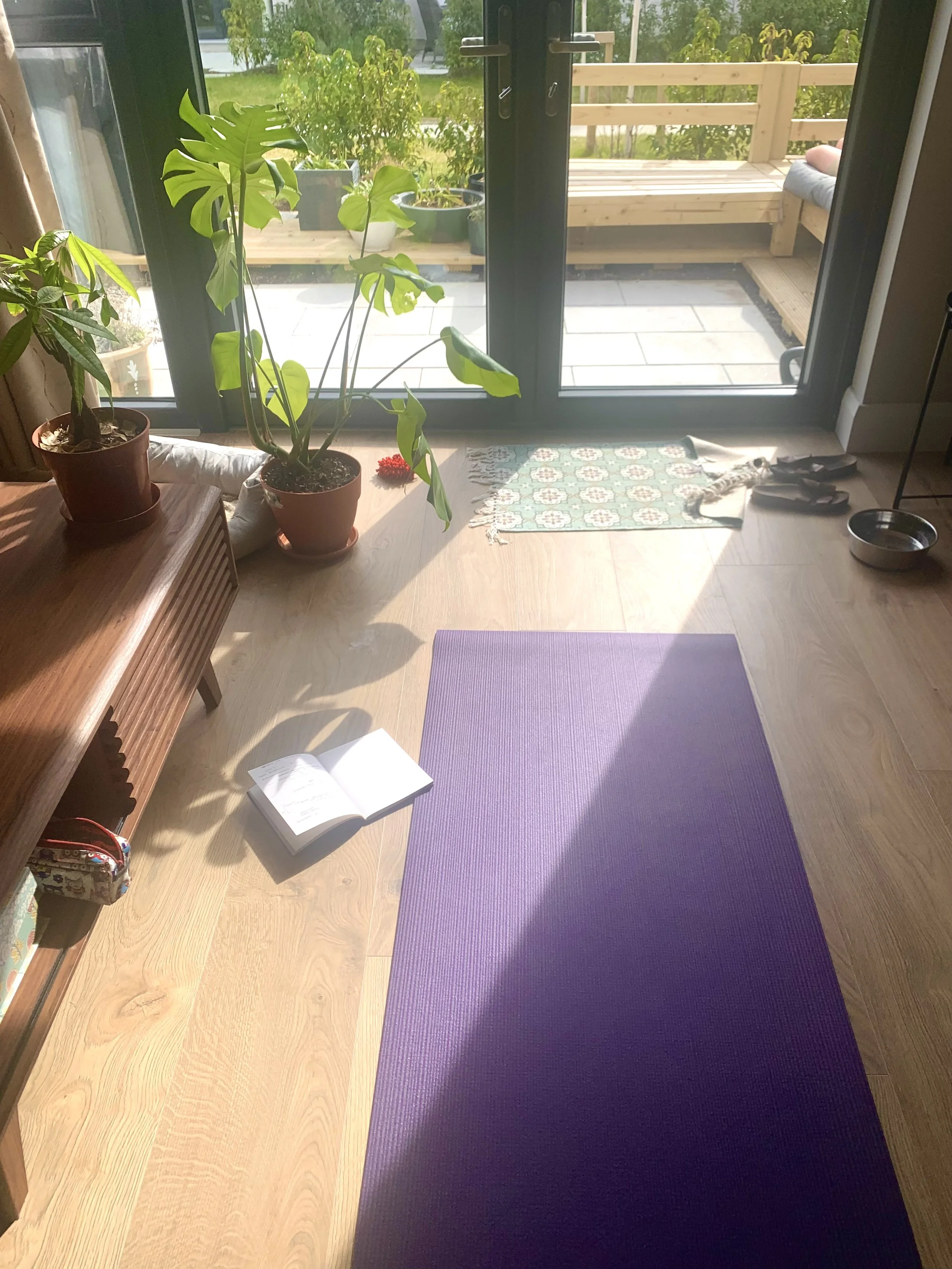
Week Five - Sushumna Nadi, A Central Line
Sushumna nadi begins at the base of the spine and is a key conduit for the flow of shakti - creative life force. It is said that when ida and pingala nadi, the feminine and masculine qualities within one person, are perfectly balanced - prana can then finally flow through sushumna nadi unrestricted, allowing the individual to feel a great sense of inner peace and divine clarity.

Week Four - Shiva + Shakti, A Relationship of Balance
In Hindu mythology, Shiva and Shakti are two characters representing a fundamental universal principle; the duality of all living things. There is not a culture or people in the world that does not recognise this duality. Jungian analysts and many modern day psychologists will talk about animus and anima and the pursuit of unifying opposites within the psyche for the sake of individuation. A doctor or a biologist might tell you that in the function of a healthy cell, the principle that balances permeability is stability. Everywhere we look, things are dancing around each other in a balance of total opposites, looking for ways to come together.

Week Three - Pingala Nadi, The Sun Channel
It turns out that activating the 'fight or flight' system in our body can be a really good thing, in small doses. There is a fascinating biological phenomenon called hormesis that occurs when we intentionally expose ourselves to short-term stress. Rather than causing harm (like if we are constantly experiencing high stress), low-dose exposure to stress actually strengthens our cellular body and re-wires our relationship to challenge.

Week Two - Ida Nadi, The Moon Channel
This ida nadi is described in yoga as a channel of life-flow in the body that runs up and down the length of the spine in a spiralling pattern. It is associated with the left side of the body and the left nostril, as well as the right side of the brain, and the parasympathetic nervous system - meaning that, when activated and flowing freely - ida nadi can help us to feel calmer, more grounded, more intuitive, and even more creative. Physically, when ida nadi is flowing and in balance with other nadis, it can help us to digest food and absorb nutrients better, sleep more deeply, and accelerate our natural healing and functional systems.

New Term Invitation! Hatha Yoga & The Nadis
Nadis are channels of energy in the body, like rivers. These rivers are said to flow with prana (the Sanskrit word for lifeforce). Although you could try to sit in meditation and study all 72,000+ nadis with your awareness, like the ancient yogis did - we are going to simplify this task by focusing only on the three primary nadis. Two of these might feel quite familiar to you once we start talking about them!

Week Five - Ishvara Pranidhana, Surrender to the Unknown
While the Sanskrit word pranidhana means 'surrender', it's worth noting that the word ishvara means 'to a higher power'. Without getting too religious, this niyama is about seeing the bigger picture and choosing to trust it, rather than resist it. It's about acknowledging that the story of our mind, the impermanence of our physical body, and even the youth of our species in the broader sense of time and space, are all indicators that there is more at play than we know - and more going on than we can possibly predict or alter.

Week Four - Svādhyaya, A Deeper Self
This week we will consider svādhyaya; which is all about self study. Many of us in modern life understand the concept of self-study, or self-reflection, well enough. Your mind might think of things like journalling, writing down your dreams, trying to figure out if you're an extrovert or an introvert, or what number you might be on the enneagram...or maybe you go deeper into psychoanalysis and contemplate all the reasons why you are the way you are. It is worthy work. However, Svādhyaya in the context of the niyamas is actually an instruction to read the scriptures and texts of yoga as a way to study your true self, beyond the psyche...which is a bit different.

Week Three - Tapas, A Steady Flame
This third niyama of tapas that we are looking at this week is often translated as 'austerity' - which means to be stern in your attitude and/or to go without excess. The English word 'austerity' feels cold, hard, difficult. However, the root of the sanskrit word tapas is: tap, which actually means to burn or to heat. The concept of tapas as a practice of personal alignment is therefore to burn away physical and psychological impurities via self-discipline. Choosing discipline over comfort, as a way to cultivate life and prana within.

Week Two - Santosha, Grounded Gratitude
The niyamas offer us a concept of gratitude and contentment that is contingent on first being honest with yourself about how you really feel, and then forgiving yourself and the situation. Allowing what is - a key step. This is the saucha part, cleanliness. Then, perhaps, from that place of honesty and forgiveness, your awareness can wander more easily towards things that truly feel to you like windfalls, like precious gifts. Things that are actually satisfying, and lighten your heart to think about. Suddenly, a deep breath can feel like a powerful tonic.

Week One - Saucha, Purifying with Awareness
Today, as we feel the seasons turn and the Hunter moon wane, we are being invited into a threshold time and a slow descent. Saucha is a concept of, yes, personal hygiene - but more potently, it is the responsibility to cultivate a practice of psychological and energetic hygiene. To work towards inner purification; clarity, lightness. This does not mean to ignore bad thoughts, or shame hidden feelings, or to run from dark or heavy things. In fact, it is the opposite. Saucha is a plea for us to walk courageously into the darker places, to spiral slowly inward, shining a light with our awareness. To feel our heartbeat and listen. It asks us to honour the wisdom often found in shadows.

New Term Invitation! Exploring The Five Niyamas, Inner Yogic Principles
Where the yamas are a set of principles that are meant to guide external behaviours in the world, the niyamas are a set of internal duties and responsibilities that we can practice and observe in ourselves; inner disciplines and wisdom, if you will, that may ultimately help us to find more peace and joy in this life.

Week Five - Aparigraha, The Freedom of Non-Possession
I read once that if you need everything to go right in order for you to feel at peace, it is not peace - it's control. When we cling to what we have, we pretend that we have power over whether it stays or goes. We don't have that power. From yogic and buddhist perspectives, believing in that illusion is a waste of your vital energy and joy. I can't help but think of the song by Joe Pug where he sings: 'The more I buy the more I'm bought. The more I'm bought the less I cost".

Week Four - Brahmacharya, The Discipline of Allowing Energy to Flow
This week, we are working with the yama of brahmacharya; non-indulgence. The literal translation for brahmacharya is to follow 'the path of Brahman', which means to act in such a way that invites discovery of the divine. Traditionally, this yama is accepted as a suggestion for celibacy - to moderate one's physical urges, especially when they may eventually lead to pain or dissatisfaction. But ultimately, brahmacharya is a suggestion to simply observe where your energy goes, and where you may be spending your energy in ways that do not serve you.

Week Three - Asteya, The Giving Back of Joy
In yoga, one of the most important teachings is chitta vritti nirodha. To still the fluctuations of the mind, and become one with all that is. When we do this, the positive impulses get clearer and louder. We have clarity. A clear intuitive road. I believe when we trust and follow our guiding feelings, we are practicing a version of asteya - non-stealing. We are no longer taking energy away from ourselves.

Week Two - Satya, the Two Realities of Truth
We are not often taught to understand that negative feelings can be transient, like clouds passing over. Or that from a yogic perspective, the root of all suffering is to actively believe in the illusion of the self. This is known as avidya - the ignorance of truth.
As in almost every wisdom culture, big yogic concepts like the above were often taught via fantastical stories and mythology. The Hindu story of Goddess Kali's bloodlust is a bold and wonderful tale that teaches us how we can lose ourselves violently in the illusion of the self, and also how we can return to truth via stillness and surrender…

Week One - Ahimsa, Cultivating a Non-Violent Practice
Many will say that ahimsa means you have to be a vegan, that you can never get angry, never hurt a fly, you should be a pacifist, a pushover, you should 'just let it go' all the time etc. While it's true that the general gist of ahimsa is to not cause harm to anyone or anything, it's important to understand - and always so humbling for me to remember - that a person who harms themselves will inevitably harm another at some stage. The outer world reflects the inner world, always.

New Term Invitation! Exploring the Yamas - Five Guiding Principles
Somewhere in Northern India around one thousand and six hundred years ago (!), a magical sage named Patanjali compiled the yoga sutras; a detailed collection of knowledge and instructions for the wise practice of yoga. Within these yoga sutras a structured path was outlined. It was called the eight limbs of ashtanga yoga. This was a journey of eight branches that, if followed and mastered, was said to lead the practitioner to experience samadhi (unconditional bliss) and enlightenment - freedom from suffering. The first of these limbs was called the yamas…

Week Five - Vyana Vayu, Connecting for Expansion
Nothing in this world is separate, and vyana vayu ensures that our body remembers this and positions itself firmly in pursuit of balance and integration. Practically, we can understand that vyana vayu relates primarily to our circulation system, but it also governs our lymphatic system, our nervous system, and the fluidity of our thoughts and emotions...how easily do we allow things to shift and flow within us? How smoothly can we move through hardship, and gain momentum for swift expansion? How gracefully can we come together, lean on others, support others, and cultivate regular practices that feel to us like coming home, like plugging in.

Week Four - Udana Vayu, Ascending Upwards
Udana vayu has the very special task of bringing our energy into higher planes of consciousness. For example, when you are awake and in the process of falling asleep, this is udana vayu in action. When you transition further into a deep sleep, udana vayu is flowing to support you towards the dream state, and beyond. When you die, it's believed that udana vayu directs your prana to return as one with the whole universe; like a drop of water coming back to the ocean for respite. This is when you are said to experience true yoga, union, on the journey towards reincarnation - when it all starts again.

Week Three - Samana Vayu, The Assimilating and Processing Force
The yoga scriptures described this samana vayu as the 'middle breath'. Samana vayu helps us to keep our balance between the intake of energy (prana vayu) and the release of energy (apana vayu). When you hit two small rocks together, one moving up and the other moving down, you get a spark - fire - agni - this is samana vayu in action.